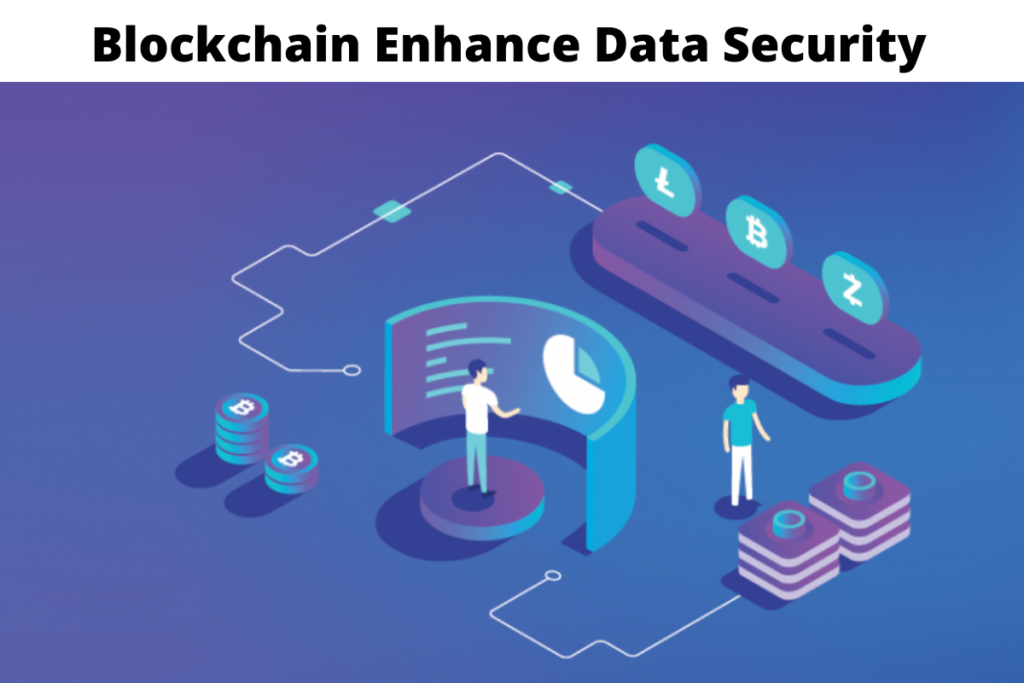How Blockchain Technology Enhances Data Security

In today’s digital age, data security is a paramount concern for individuals, businesses, and organizations of all sizes. With the increasing frequency and sophistication of cyberattacks, safeguarding sensitive information has never been more critical. Enter blockchain technology, originally devised to underpin cryptocurrencies like Bitcoin but now recognized as a powerful tool for enhancing data security across various industries. In this article, we will explore how blockchain technology achieves this by providing unprecedented levels of data protection, transparency, and trust.
Understanding Blockchain Technology
Before delving into its role in data security, let’s briefly recap what blockchain technology is. At its core, a blockchain is a decentralized and immutable digital ledger that records transactions across multiple computers. These transactions are grouped into “blocks” and linked together in a chronological order to form a continuous chain. This distributed ledger is maintained by a network of nodes (computers), and once data is recorded, it becomes virtually tamper-proof.
How Blockchain Enhances Data Security
- Immutability and Tamper Resistance: Once data is recorded on a blockchain, it cannot be altered retroactively without the consensus of the network. This immutability ensures that once information is stored, it remains secure and unchanged. In traditional centralized systems, data can be vulnerable to unauthorized alterations, but blockchain eliminates this risk.
- Decentralization: Traditional databases and storage systems are centralized, making them attractive targets for hackers. In contrast, blockchain operates on a decentralized network, meaning there is no single point of failure. Even if one node is compromised, the integrity of the entire blockchain remains intact.
- Encryption: Blockchain networks use advanced cryptographic techniques to secure data. Transactions and records are encrypted, ensuring that only authorized parties can access the information. This encryption adds an additional layer of security to stored data.
- Consensus Mechanisms: Blockchain networks rely on consensus mechanisms to validate and add transactions to the ledger. In the case of public blockchains, like Bitcoin and Ethereum, this involves a process known as proof of work (PoW) or proof of stake (PoS). These mechanisms ensure that malicious actors cannot manipulate the data.
- Transparency: While security often implies secrecy, blockchain offers a unique combination of security and transparency. All participants in a blockchain network can view the entire transaction history, which fosters trust and accountability. Any suspicious activity is easily detectable and can be addressed promptly.
- Permissioned Blockchains: In some cases, businesses and organizations opt for permissioned blockchains, where only authorized entities can participate. This controlled access ensures that sensitive data is only visible to trusted parties, enhancing privacy and security.
- Smart Contracts: Smart contracts are self-executing agreements with the terms of the contract directly written into code. They automate various processes, reducing the risk of human error and ensuring that contractual obligations are met without the need for intermediaries.
Real-World Applications
Blockchain technology’s ability to enhance data security has led to its adoption in various sectors:
- Healthcare: Blockchain secures patient records, ensuring data integrity, and allows for controlled sharing of medical information among healthcare providers while maintaining patient privacy.
- Finance: Financial institutions use blockchain for secure and efficient cross-border transactions, Know Your Customer (KYC) processes, and fraud prevention.
- Supply Chain: Companies use blockchain to track the provenance of goods, reduce counterfeits, and improve transparency in supply chain operations.
- Government: Governments are exploring blockchain for secure and transparent voting systems, land registries, and identity management.
- Intellectual Property: Blockchain can protect intellectual property rights by timestamping and securely storing copyrights, patents, and digital content ownership.
Challenges and Future Outlook
While blockchain technology offers robust data security, it is not a panacea. Challenges such as scalability, energy consumption (for PoW-based blockchains), and regulatory considerations must be addressed as the technology matures.
However, the future of data security undoubtedly involves blockchain. As businesses and industries continue to embrace this technology, we can expect even more innovative solutions and applications that not only protect data but also empower individuals and organizations to take control of their digital assets securely.
Conclusion
Blockchain technology is transforming data security by offering a combination of immutability, decentralization, encryption, and transparency. As the digital landscape becomes increasingly complex and data breaches more prevalent, blockchain’s role in safeguarding sensitive information is set to become even more vital. Whether in healthcare, finance, supply chain management, or government, blockchain technology is enhancing data security and reshaping the way we protect and manage our digital assets in the 21st century.